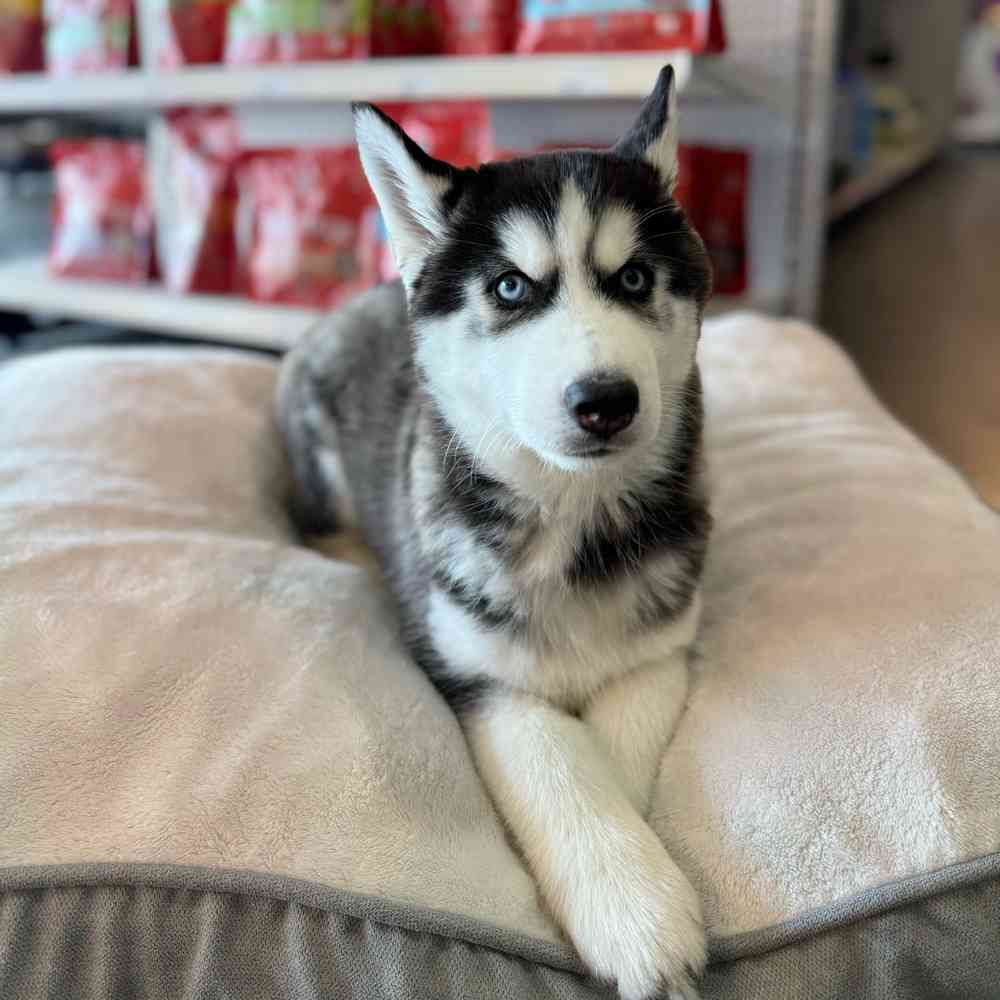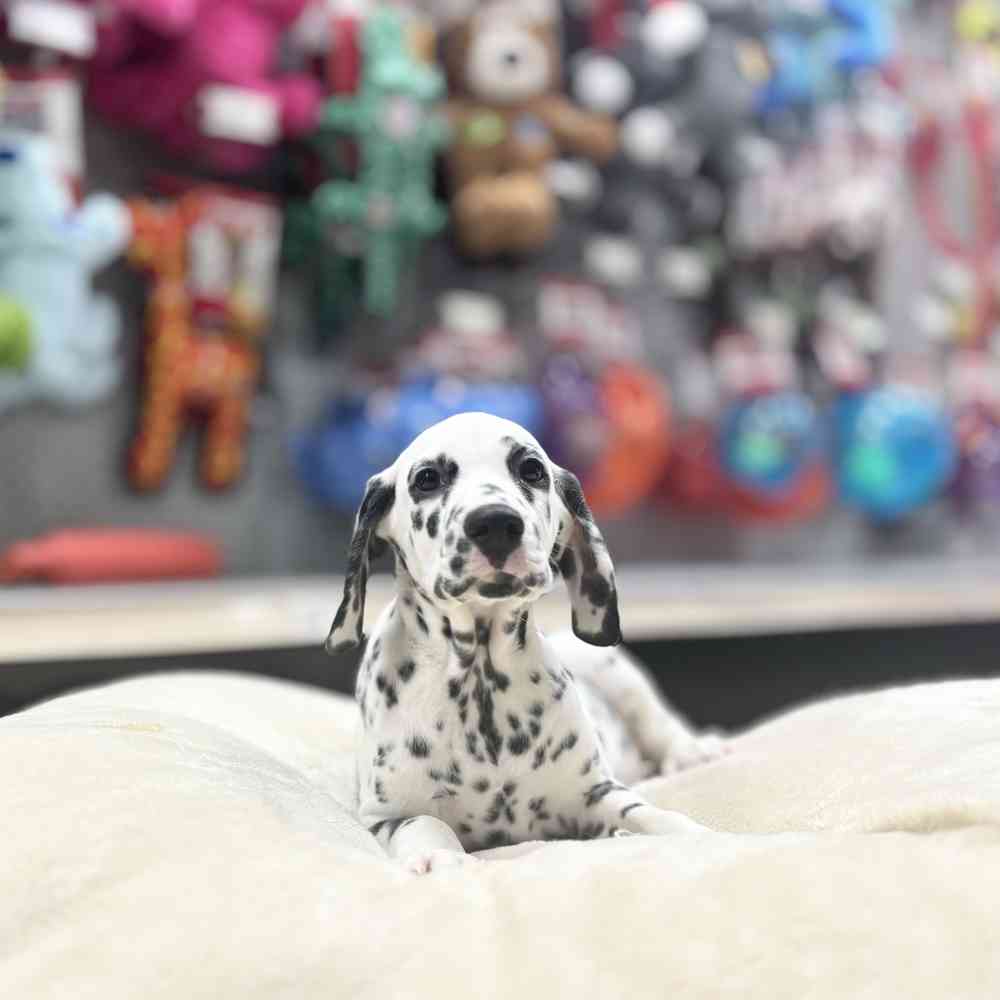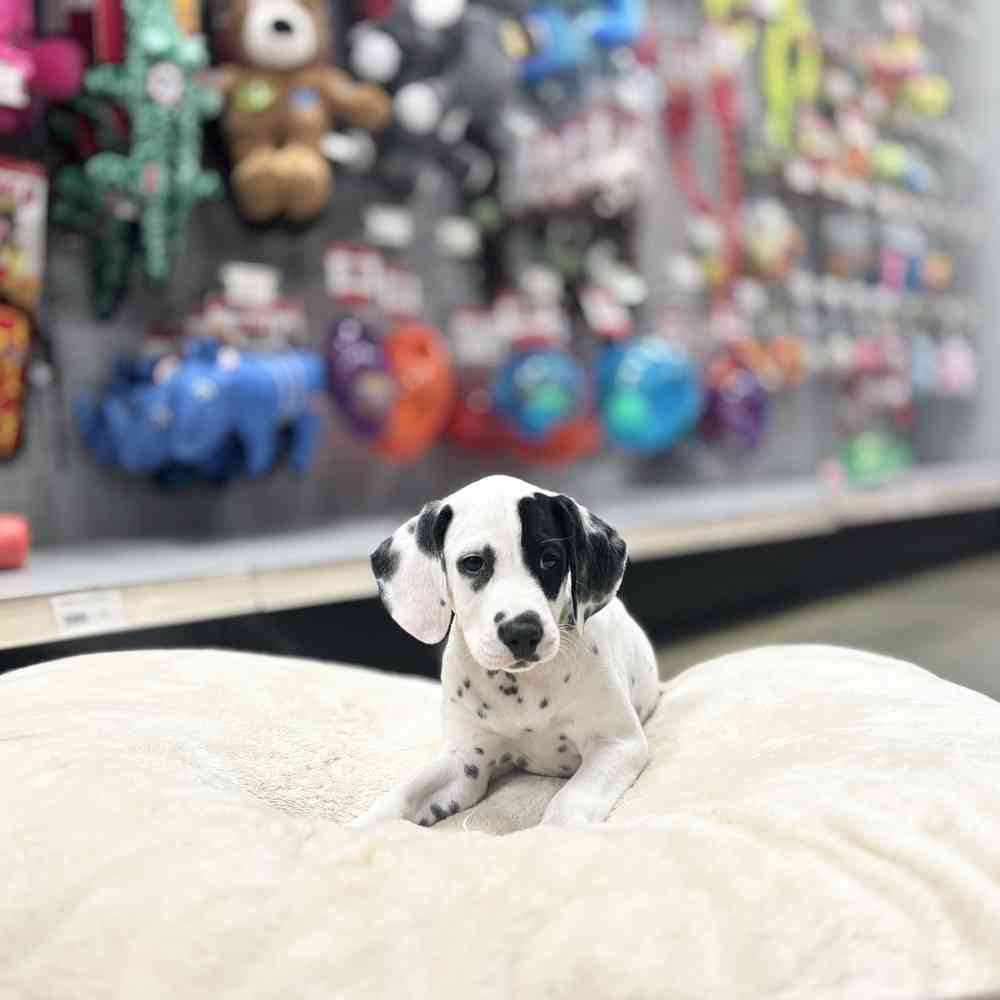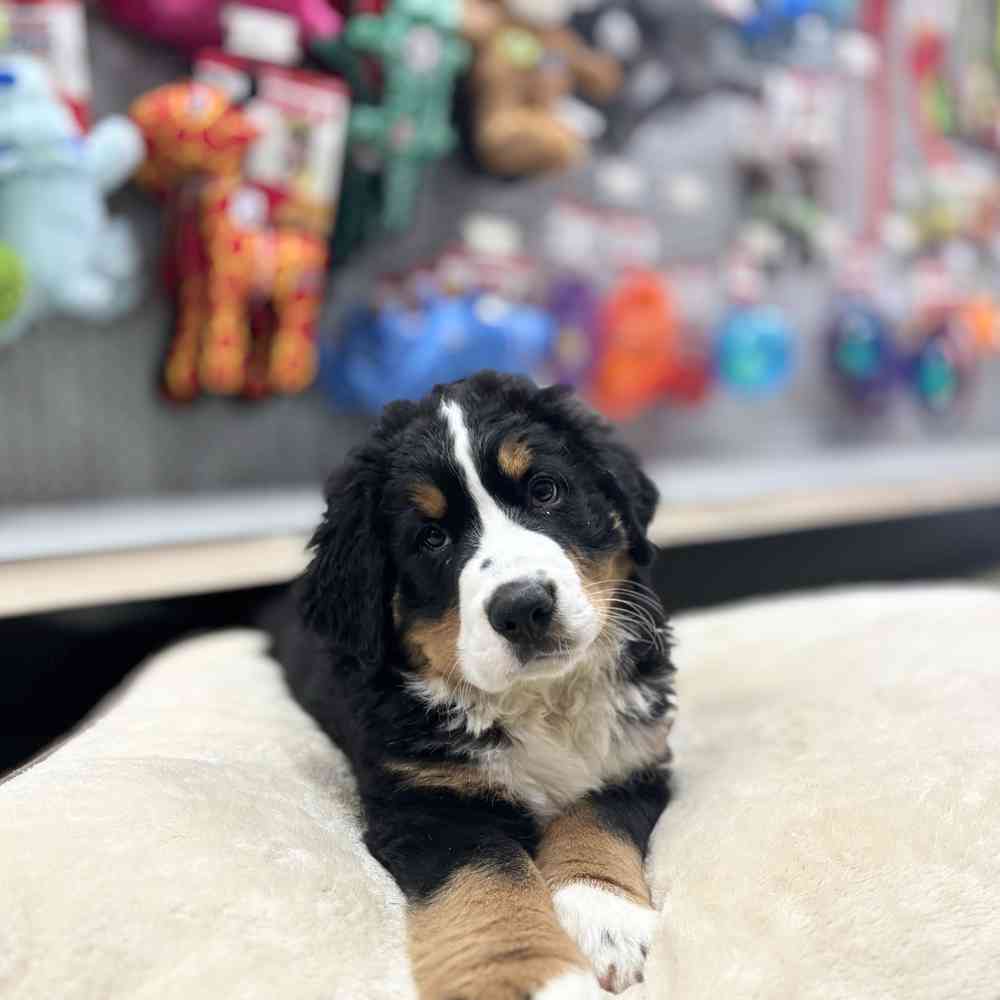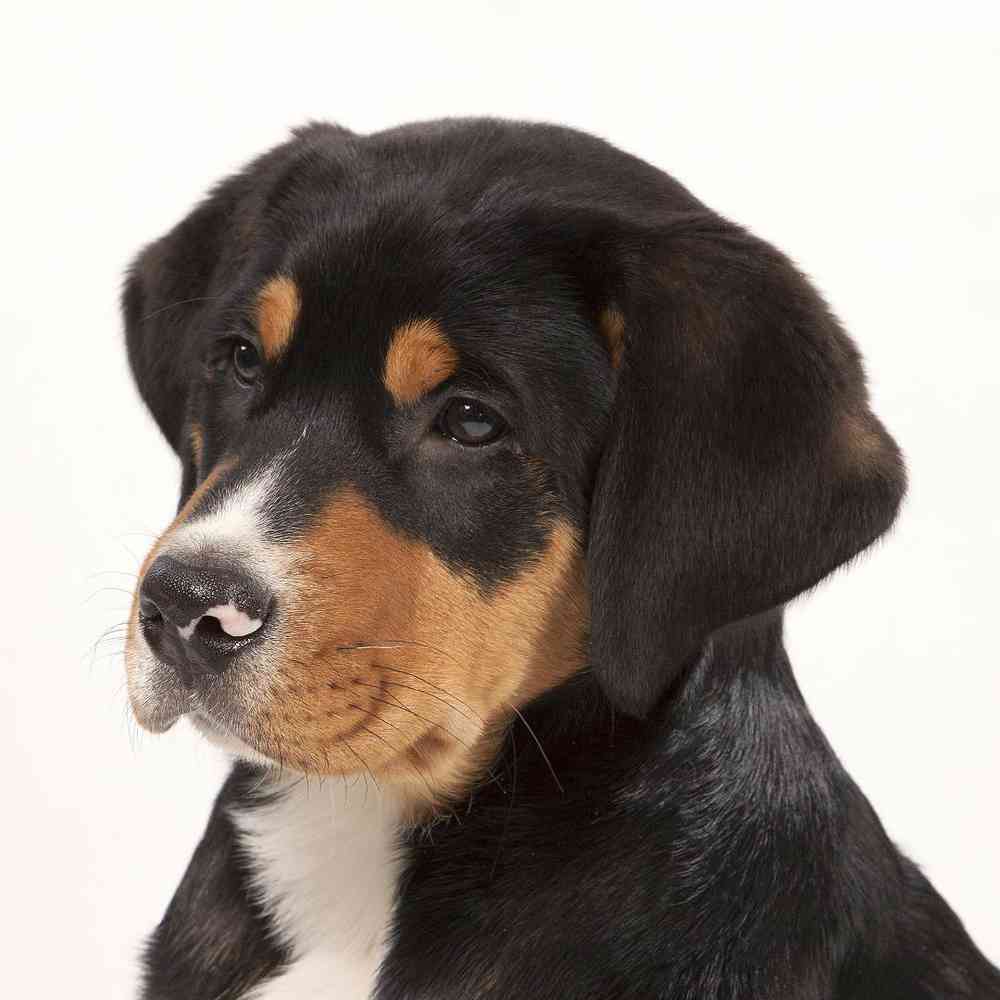
AKC Registrable
Greater Swiss Mountain Dog
The Greater Swiss Mountain Dog is a large, immensely strong worker famous for a dense coat of striking black, red, and white markings. Dependable and faithful Swissies earned their feed as herders, drafters, and all-around pasture dogs.
Available Pups
Puppy Knowledge
Breed Standard
General Appearance
The Greater Swiss Mountain Dog is a Draft and Drover breed and should structurally appear as such. It is a striking, tri-colored, large, powerful, confident dog of sturdy appearance. It is a heavy boned and well muscled dog which, in spite of its size and weight, is agile enough to perform the all-purpose farm duties of the mountainous regions of its origin.
Size, Proportion, Substance
Height at the highest point of the shoulder is ideally: Dogs 25½ to 28½ inches. Bitches 23½ to 27 inches. Body length to height is approximately a 10 to 9 proportion, thus appearing slightly longer than tall. It is a heavy boned and well muscled dog of sturdy appearance.
Head
Expression is animated and gentle. The eyes are almond shaped and brown, dark brown preferred, medium sized, neither deep set nor protruding. Blue eye or eyes is a disqualification. Eyelids are close fitting and eyerims are black. The ears are medium sized, set high, triangular in shape, gently rounded at the tip, and hang close to the head when in repose. When alert, the ears are brought forward and raised at the base. The top of the ear is level with the top of the skull. The skull is flat and broad with a slight stop. The backskull and muzzle are of approximately equal length. The backskull is approximately twice the width of the muzzle. The muzzle is large, blunt and straight, not pointed and most often with a slight rise before the end. In adult dogs the nose leather is always black. The lips are clean and as a dry-mouthed breed, flews are only slightly developed. The teeth meet in a scissors bite.
Neck, Topline, Body
The neck is of moderate length, strong, muscular and clean. The topline is level from the withers to the croup. The chest is deep and broad with a slight protruding breastbone. The ribs are well-sprung. Depth of chest is approximately one half the total height of the dog at the withers. Body is full with slight tuck up. The loins are broad and strong. The croup is long, broad and smoothly rounded to the tail insertion. The tail is thick from root to tip, tapering slightly at the tip, reaching to the hocks, and carried down in repose. When alert and in movement, the tail may be carried higher and slightly curved upwards, but should not curl, or tilt over the back. The bones of the tail should feel straight.
Forequarters
The shoulders are long, sloping, strong and moderately laid back. They are flat and well-muscled. Forelegs are straight and strong. The pasterns slope very slightly, but are not weak. Feet are round and compact with well arched toes, and turn neither in nor out. The dewclaws may or may not be present.
Hindquarters
The thighs are broad, strong and muscular. The stifles are moderately bent and taper smoothly into the hocks. The hocks are well let down and straight when viewed from the rear. Feet are round and compact with well arched toes, and turn neither in nor out. Dewclaws should be removed.
Coat
Topcoat is dense, approximately 1-1/4 to 2 inches in length. Undercoat must be present and may be thick and sometimes showing, almost always present at neck but may be present throughout. Color of undercoat ranges from the preferred dark gray to light gray to tawny. Total absence of undercoat is undesirable and should be penalized.
Color
The topcoat is black. The markings are rich rust and white. Symmetry of markings is desired. On the head, rust typically appears over each eye, on each cheek and on the underside of the ears. On the body, rust appears on both sides of the forechest, on all four legs and underneath the tail. White markings appear typically on the head (blaze) and muzzle. The blaze may vary in length and width. It may be a very thin stripe or wider band. The blaze may extend just barely to the stop or may extend over the top of the skull and may meet with white patch or collar on the neck. Typically, white appears on the chest, running unbroken from the throat to the chest, as well as on all four feet and on the tip of the tail. White patches or collar on the neck is acceptable. Any color other than the "Black, Red and White" tri-colored dog described above, such as "Blue/Charcoal, Red and White" or "Red and White" is considered a disqualification. When evaluating the Greater Swiss Mountain Dog, markings and other cosmetic factors should be considered of lesser importance than other aspects of type which directly affect working ability.
Gait
Good reach in front, powerful drive in rear. Movement with a level back
Temperament
Faithful, Family-Oriented, Dependable
Summary
The foregoing is the description of the ideal Greater Swiss Mountain Dog. Defects of both structure and temperament are to be judged more severely than mere lack of elegance because they reduce the animal's capacity to work. Any fault that detracts from the above described working dog should be penalized to the extent of the deviation.
Disqualifications
:Any color other than the "Black, Red and White" tri-colored dog described above, such as "Blue/Charcoal, Red and White" or "Red and White." Blue eye or eyes.
Overview
Group
Working
About
“Greater” than what? Well, standing as high as 28.5 inches and weighing as much as a midsize human, a Greater Swiss might easily be greater than you. Swissies are immensely strong, yet agile enough to move a flock across the sloping foot of a mountain. The coat is a striking tricolor—black, red, and white. The head and muzzle typically have a white marking (the “blaze”), setting off a sweet expression. Several big mountain-dog breeds are described as “majestic,” but Swissies practically invented the word.
History
Swissies descend from war dogs brought over the Alps by Julius Caesar’s legions. The Swiss utilized these mastiff-types when breeding their Alpine mountain dogs, or Sennenhund. Of these, Swissies are the oldest and the largest (or, the “greater”). In remote mountain passes they toiled as all-around farm-and-pasture hands, specializing in hauling loads of meat and dairy to market in smartly outfitted dogcarts. The Greater Swiss is closely related to the Bernese Mountain Dog and is a component breed of the Saint Bernard and Rottweiler.
Standard
The Greater Swiss Mountain Dog is a Draft and Drover breed and should structurally appear as such. It is a striking, tri-colored, large, powerful, confident dog of sturdy appearance. It is a heavy boned and well muscled dog which, in spite of its size and weight, is agile enough to perform the all-purpose farm duties of the mountainous regions of its origin.
Nutrition
The Greater Swiss Mountain Dog can thrive on many types of diet, from kibble to raw to a combination of both. The most serious issue with feeding the GSMD is overfeeding, which leads to many digestive problems, including loose stools, and also leads to obesity, which is one of the greatest health problems in the breed.
Grooming
This is basically a “wash and wear” breed, but they are double coated and do blow their undercoat, usually twice a year. When this is occurring they benefit from a good bath and blow-out, followed by a thorough brushing with a rake or shedding tool. For the rest of the year the occasional bath and brushing usually does the trick. They need regular nail-trims and ear and teeth cleaning.
Exercise
The Greater Swiss Mountain Dog requires moderate exercise. A walk around the block or a romp in the woods generally will satisfy their daily exercise needs. This breed is much better suited for the person looking for a hiking companion than the person wanting a bicycling or marathon-running partner.
Training
The GSMD is very food motivated and responds well to training using food rewards. They can also have a stubborn streak, however, so their owners must be more determined than they are. It is not recommended to use any harness-type training device on this breed. They are a draft breed, and the use of a harness (other than for draft work) just tends to make them pull that much harder. As with all dogs, early socialization and puppy training classesare recommended.
Health
The GSMD does not have any breed-specific disorders but can have health problems that affect large-breed dogs. This can include orthopedic issues, although overall the GSMD’s orthopedics tend to be very good for a large breed. Splenic torsion, unrelated to gastric torsion, occurs more often in this breed than in other breeds. Owners should be aware of the possibility of bloat and know the symptoms, and what to do should it occur. Urinary incontinence is fairly common in puppies and spayed bitches. Epilepsy can occur in any pedigree; genetic markers for this have not yet been identified. Overall the GSMD tends to be a very healthy breed. More information on breed health can be found on the website of the Greater Swiss Mountain Dog Club of America.


